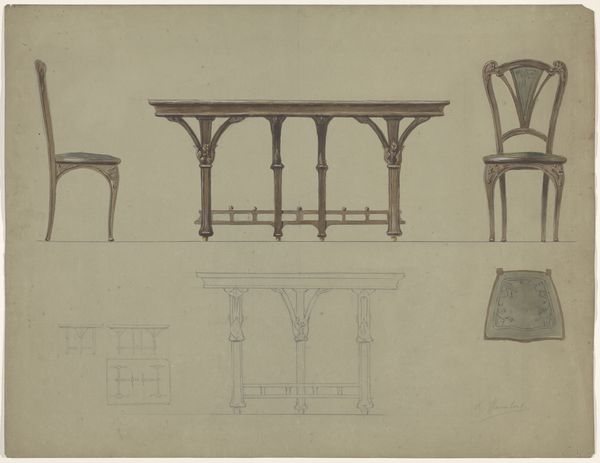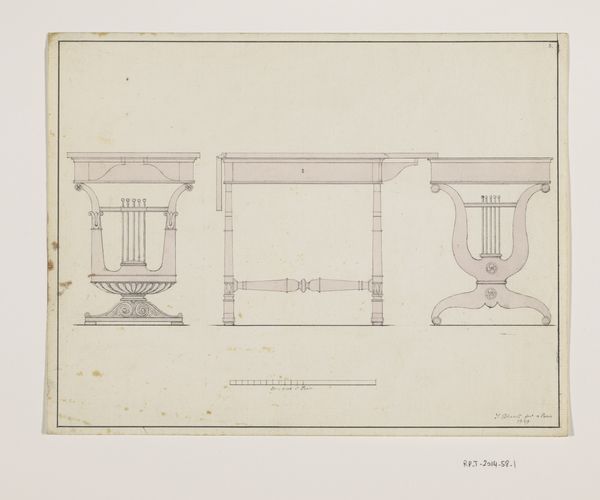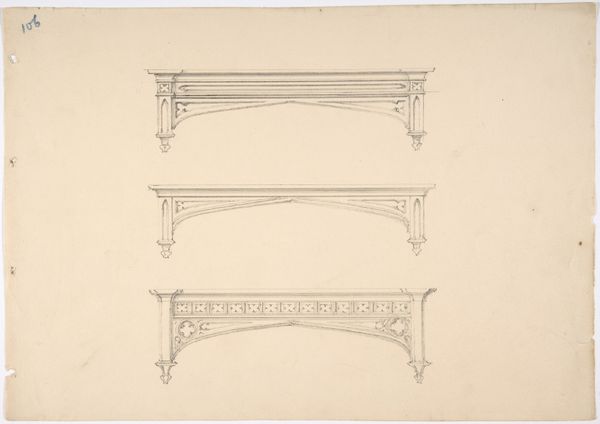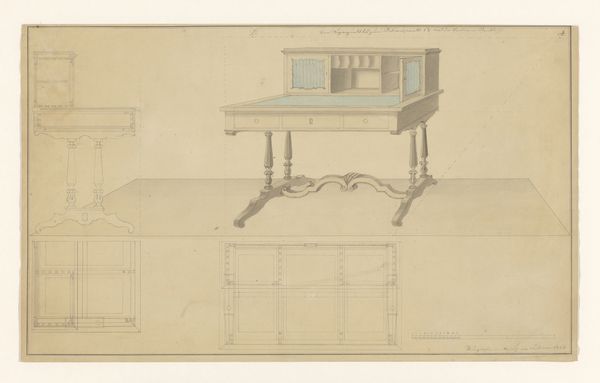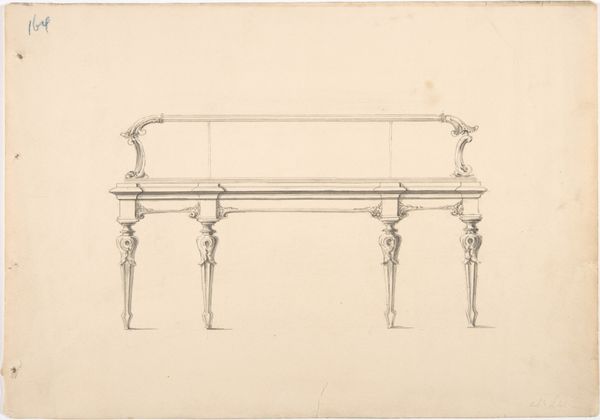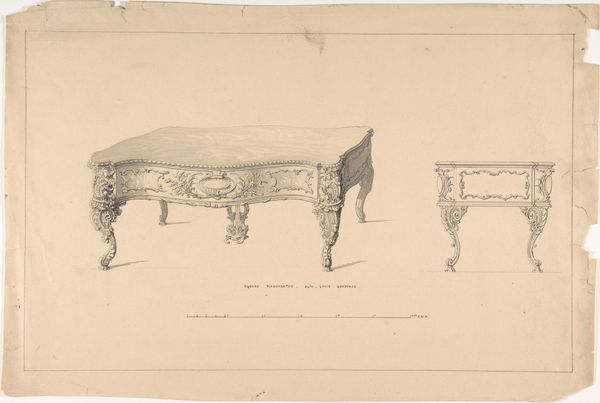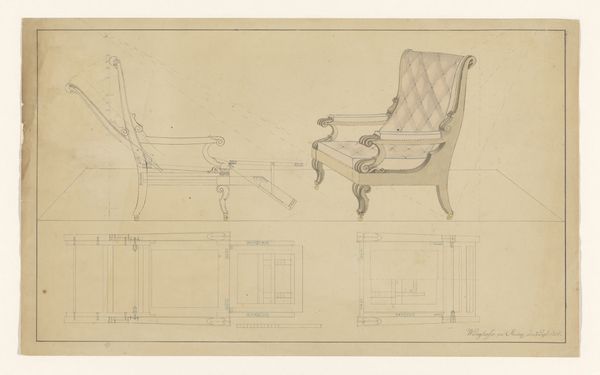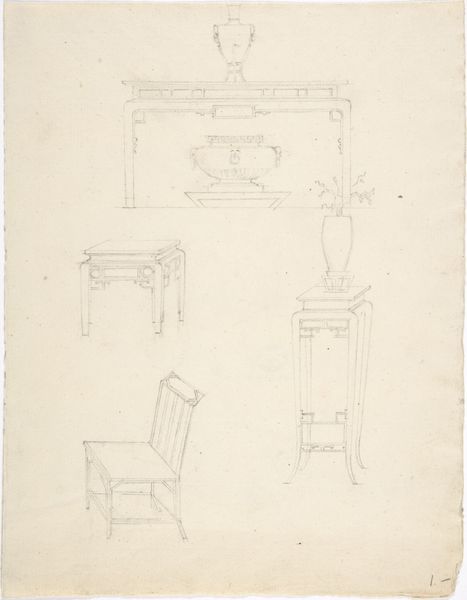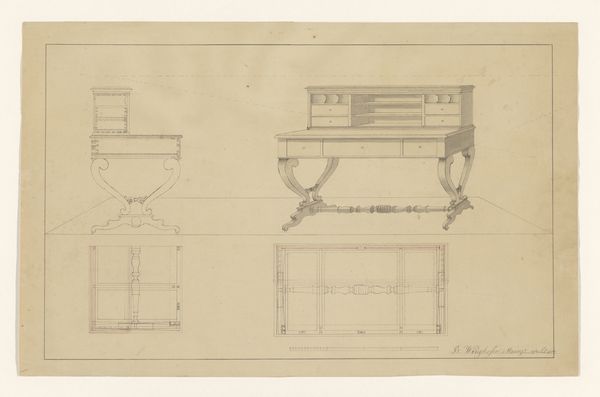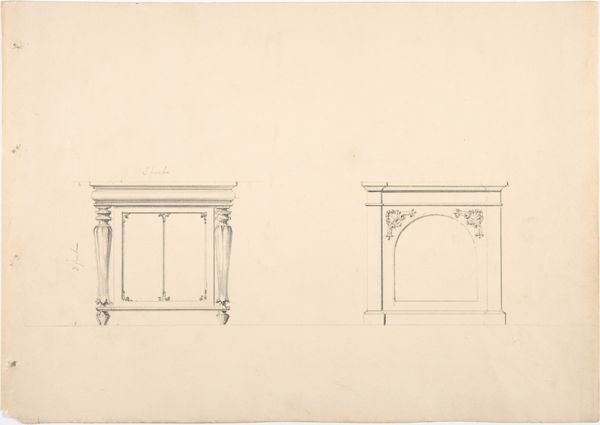
Ontwerp voor een uitklaptafel met zijaanzicht en plattegronden onder beide aanzichten 1851
0:00
0:00
drawing, paper, pencil
#
drawing
#
paper
#
geometric
#
pencil
#
history-painting
#
academic-art
Dimensions: height 276 mm, width 436 mm
Copyright: Rijks Museum: Open Domain
Editor: This is "Ontwerp voor een uitklaptafel met zijaanzicht en plattegronden onder beide aanzichten," or Design for a folding table with side view and floor plans below both views, from 1851, created with pencil on paper by B. Winghofer. I find it fascinating how it combines artistic representation with technical design. What elements of its visual structure stand out to you? Curator: The immediate feature that grabs my attention is its almost scientific presentation. The rendering possesses a stark linearity and precision, indicative of a functional blueprint rather than an artistic indulgence. Notice the stark contrast between the ornate, almost Baroque legs of the table and the orthogonal lines dictating its structural dimensions. Does this interplay suggest anything about form versus function? Editor: It highlights a tension, certainly. The decorative flourishes seem almost at odds with the drawing’s geometric, utilitarian purpose. But it also suggests a desire to integrate artistry even into the most practical of designs. What is your understanding of the semiotics involved here? Curator: The piece can be read as a semiotic puzzle. The "table," or signifier, represents domesticity and function. But Winghofer complicates this signifier with intricate carvings. The sign itself is, therefore, both practical and ornamental. What does that ornament communicate in this piece? Editor: Maybe a sense of status or aspiration? The ornate details might suggest a desire for elegance and refinement, even in an everyday object. Looking at the broader picture, the artist’s signature almost becomes a graphic element within the drawing. Curator: Precisely. Its integration suggests a blurring of artistic and functional boundaries, reminding us that every design choice is also an act of authorship and artistic expression. In conclusion, how do the different components of the drawings – technical drawing and illustrative elements – convey the artist's intentions and aspirations? Editor: That the most effective art marries intention and aesthetics. Thank you for your interpretation. Curator: My pleasure.
Comments
No comments
Be the first to comment and join the conversation on the ultimate creative platform.

